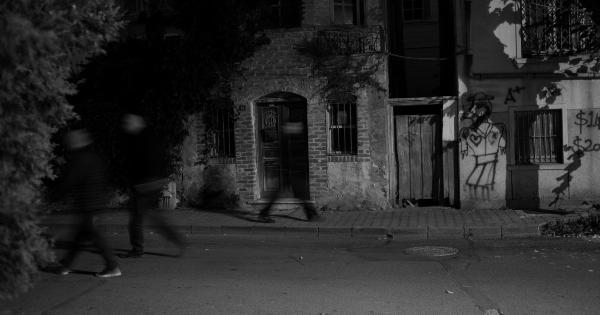Night terrors, also known as sleep terrors, are a type of parasomnia disorder that occurs during deep sleep. Unlike nightmares, which occur during REM sleep, night terrors happen during non-REM sleep stages.
These episodes are often characterized by intense fear, screaming, and thrashing around, leaving both the individual experiencing them and their loved ones feeling helpless and concerned. In this article, we will explore the causes, symptoms, and treatment options for night terrors.
Understanding Night Terrors
Night terrors primarily affect children, especially those between the ages of 3 and 12. However, they can also occur in adults, albeit more rarely. These episodes usually last for a few minutes, but they can sometimes stretch up to an hour or longer.
Unlike nightmares, which are often vividly recalled upon waking up, individuals experiencing night terrors usually have no memories of the event or only a vague recollection.
During a night terror episode, the person may suddenly sit up in bed, scream, and display signs of extreme fear. They may exhibit rapid breathing, an increased heart rate, and a flushed face. It is not uncommon for them to sweat profusely or tremble.
Additionally, they may appear agitated and unresponsive to any attempts at comfort or communication.
The Causes of Night Terrors
The exact cause of night terrors is still not fully understood. However, some factors have been identified as potential contributors:.
- Genetics: Night terrors tend to run in families, suggesting a genetic link.
- Stress and anxiety: High levels of stress or anxiety can increase the likelihood of experiencing night terrors.
- Fever: Night terrors can be triggered by high body temperatures, such as those associated with fever.
- Sleep deprivation: Lack of quality sleep or inadequate sleep can increase the risk of night terrors.
- Medication: Certain medications, such as sedatives or drugs used to treat psychiatric disorders, may increase the likelihood of night terrors.
Recognizing the Symptoms
Recognizing night terrors can be crucial in seeking appropriate help and support. Here are some common symptoms:.
- Intense fear: The person experiencing the night terror may display extreme fear.
- Screaming and crying: The individual may let out piercing screams and may cry inconsolably.
- Physical signs: Rapid breathing, sweating, increased heart rate, and trembling are common physical signs of night terrors.
- Confusion and disorientation: Upon waking up, the person may feel confused and disoriented, often taking some time to fully regain awareness of their surroundings.
- Amnesia: Most individuals have no recollection of the night terror episode upon waking up or only have a hazy memory of it.
Managing and Treating Night Terrors
While night terrors can be distressing for both the person experiencing them and their loved ones, there are strategies that can help manage and reduce the frequency of these episodes:.
- Create a calming bedtime routine: Establishing a consistent and relaxing bedtime routine can promote better sleep quality and potentially reduce the occurrence of night terrors.
- Ensure a conducive sleep environment: Keep the bedroom cool, dark, and quiet to create an optimal sleep environment.
- Manage stress and anxiety: Practicing stress-reduction techniques, such as deep breathing exercises or meditation, can help manage underlying stress and anxiety.
- Establish regular sleep patterns: Encourage consistent sleep and wake times to promote a healthy sleep schedule.
- Avoid sleep deprivation: Aim for an appropriate amount of sleep each night to minimize the risk of night terrors.
If night terrors persist or significantly disrupt daily life, it is advisable to seek professional help. A healthcare provider or sleep specialist may recommend further evaluation and suggest additional treatment options, such as:.
- Cognitive-behavioral therapy (CBT): CBT can be effective in managing underlying anxiety that may contribute to night terrors.
- Medication: In certain cases, medication may be prescribed to help reduce the occurrence of night terrors.
- Addressing underlying medical conditions: If night terrors are associated with an underlying medical condition, treating the primary condition may alleviate the episodes.
Supporting Individuals with Night Terrors
For family members or loved ones witnessing the night terror episodes, it can be challenging to know how to respond. Here are some ways to provide support:.
- Remain calm: It is important to stay calm and composed during a night terror episode to avoid escalating the individual’s fear or anxiety.
- Ensure safety: Create a safe environment by removing any potential hazards or obstacles they may encounter during their episode.
- Avoid restraining: It is generally recommended not to restrain the person during a night terror, as it may increase agitation.
- Provide reassurance: After the episode, offer comfort and reassurance to help the person feel safe and secure.
Conclusion
Night terrors can be distressing for both the individual experiencing them and their loved ones. Understanding the causes, symptoms, and treatment options is essential in managing these episodes effectively.
While strategies like establishing a calming bedtime routine and managing stress can help reduce the frequency of night terrors, seeking professional help may be necessary for persistent or severe cases. With the right support and interventions, individuals with night terrors can improve their sleep quality and overall well-being.




























